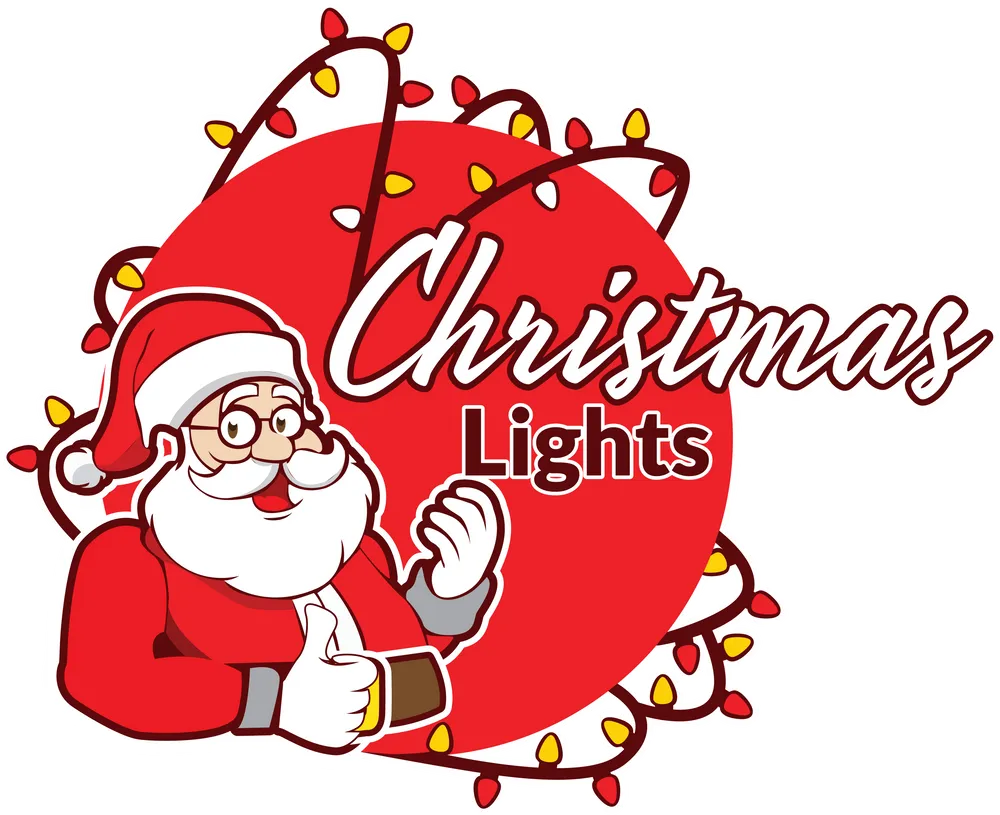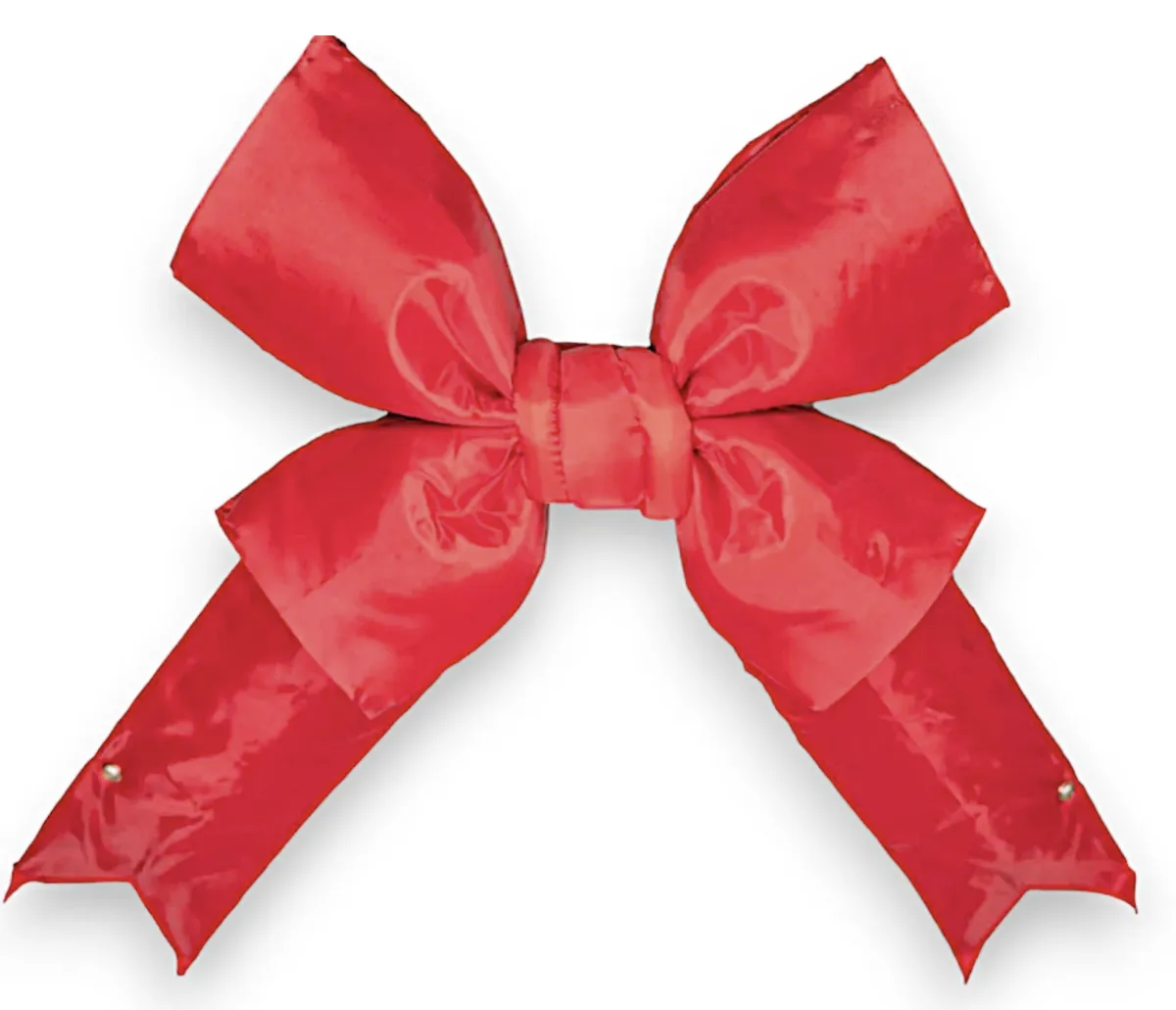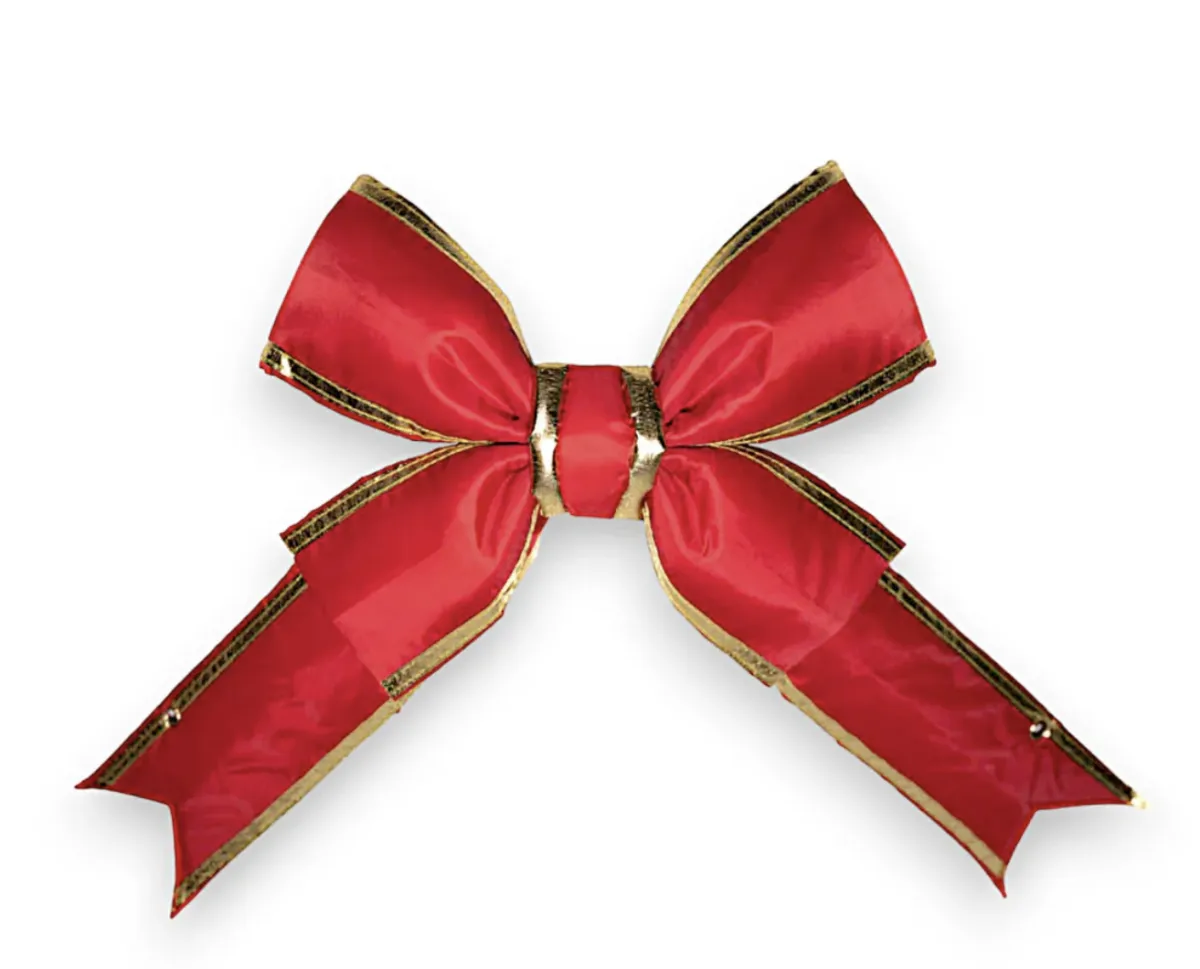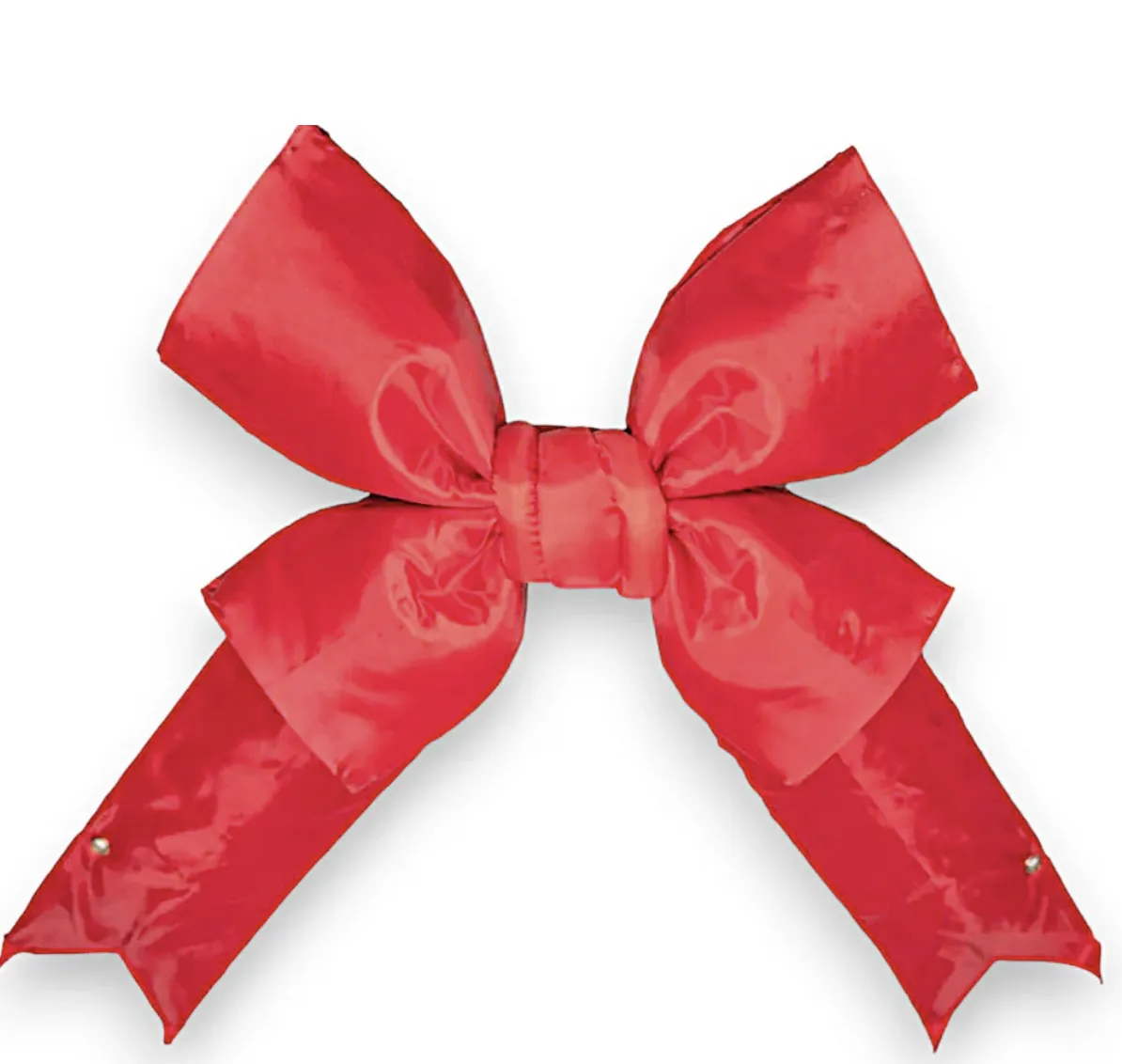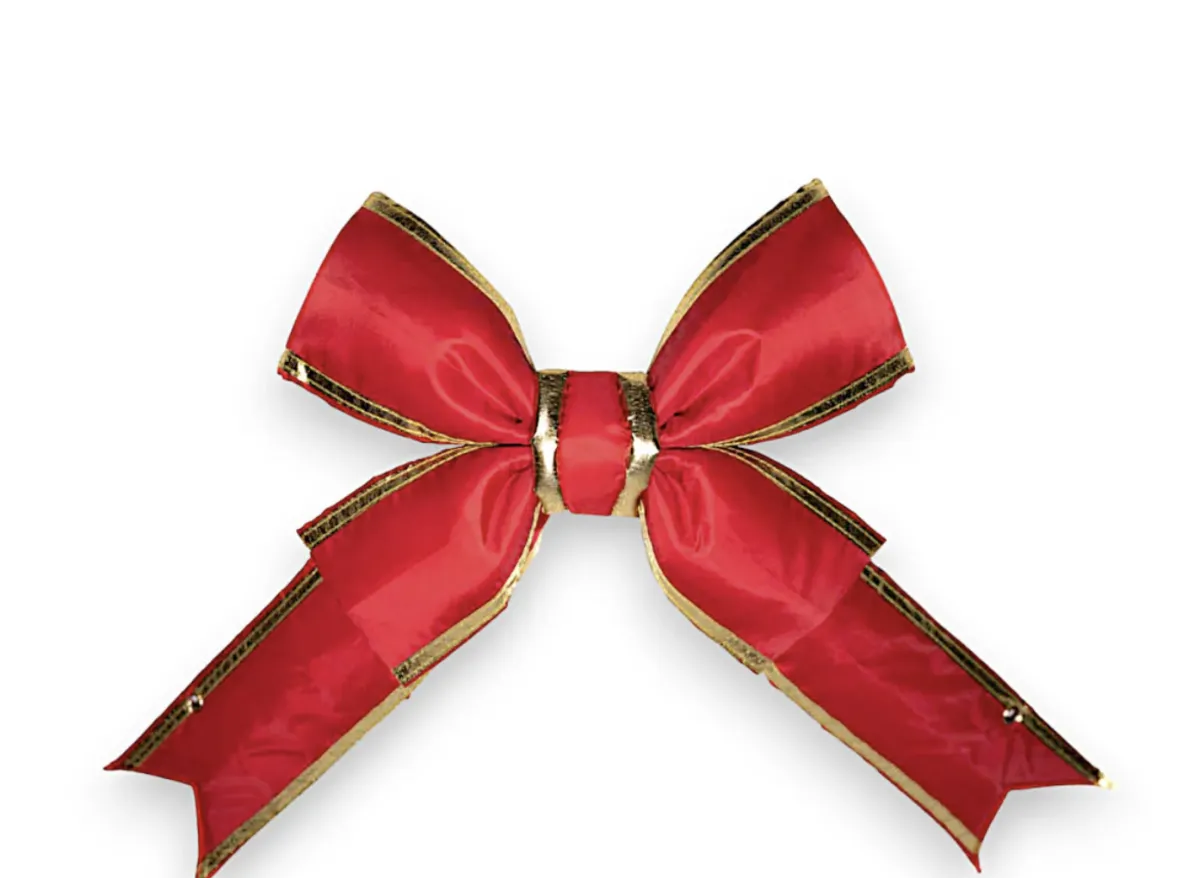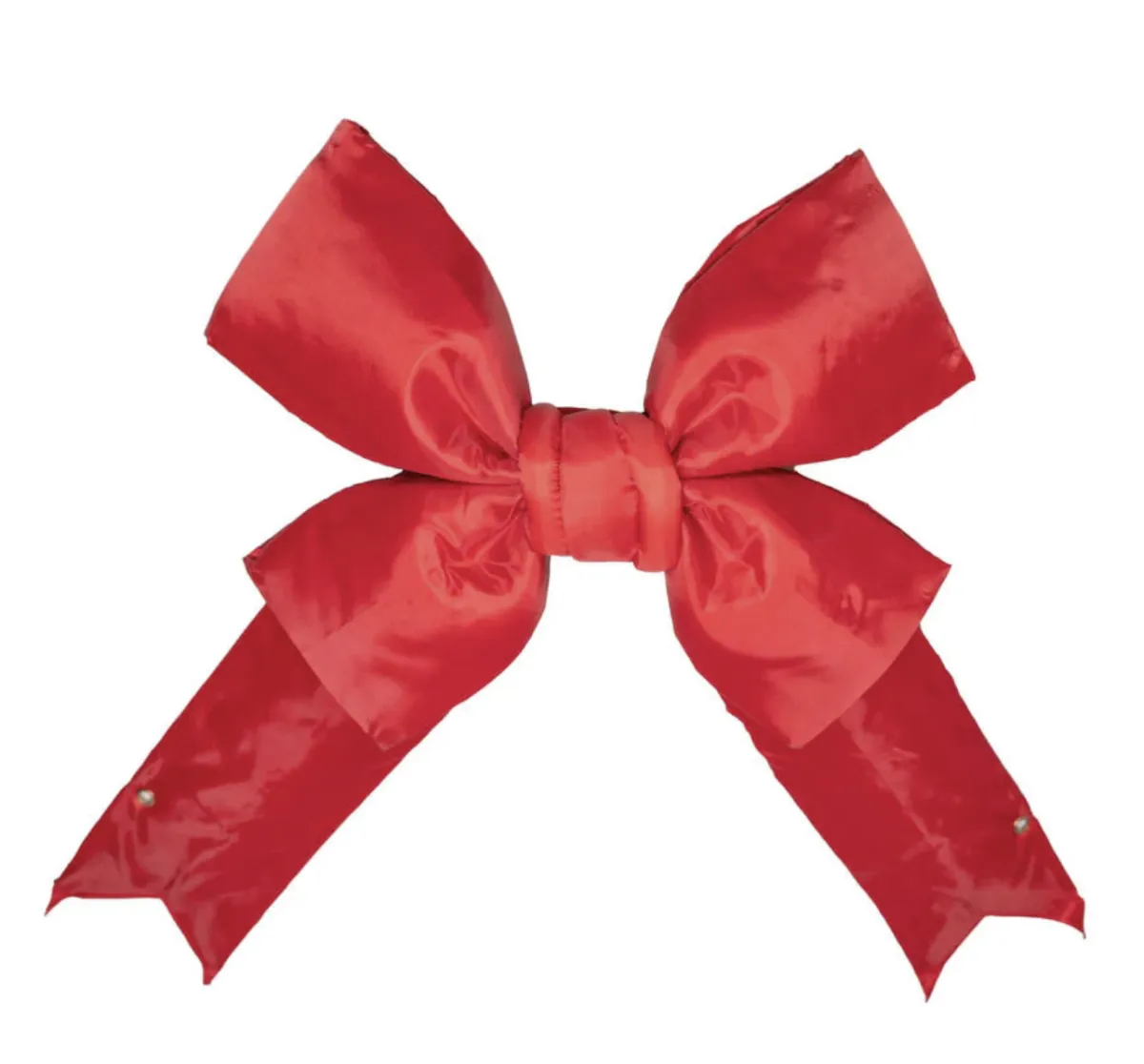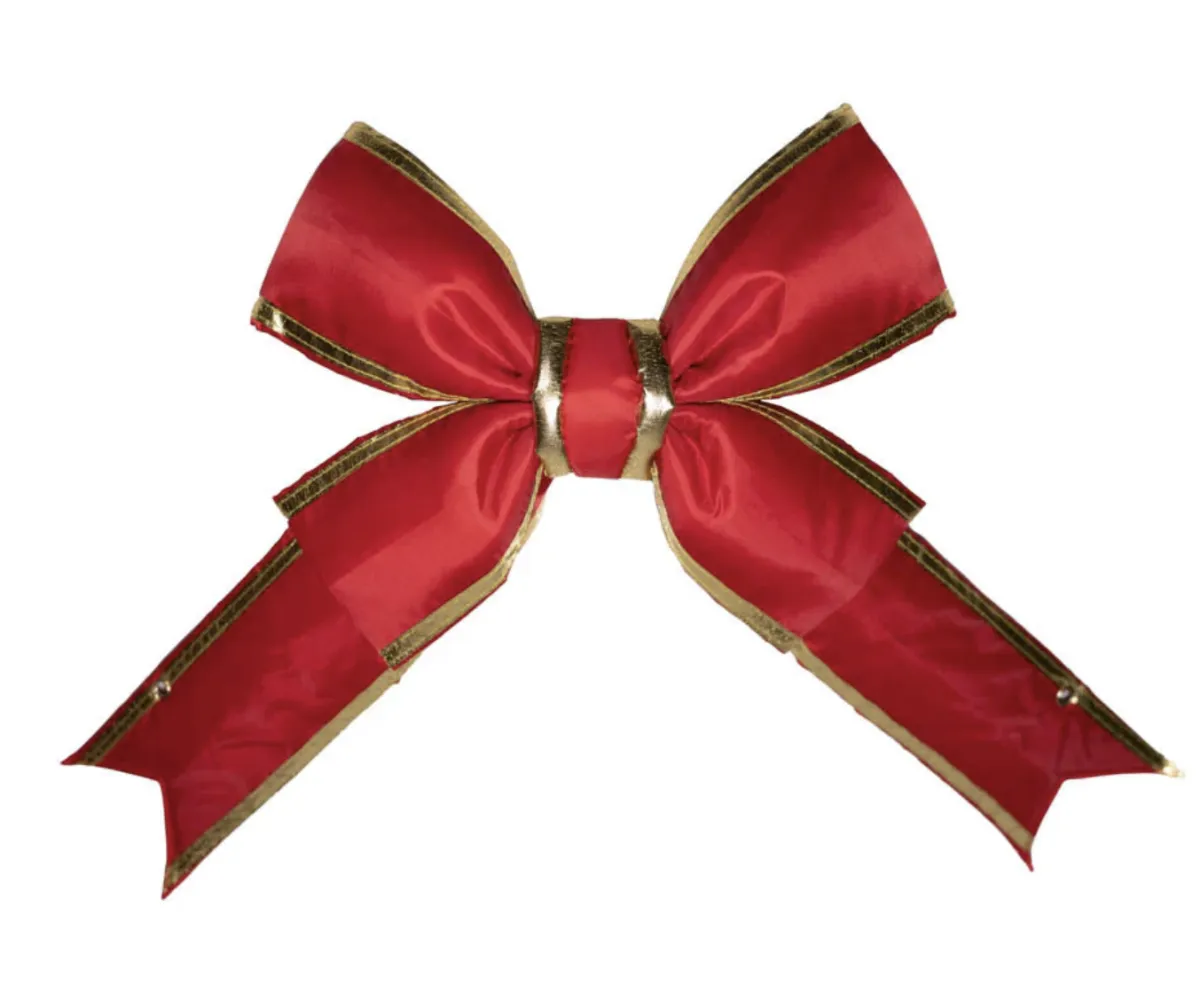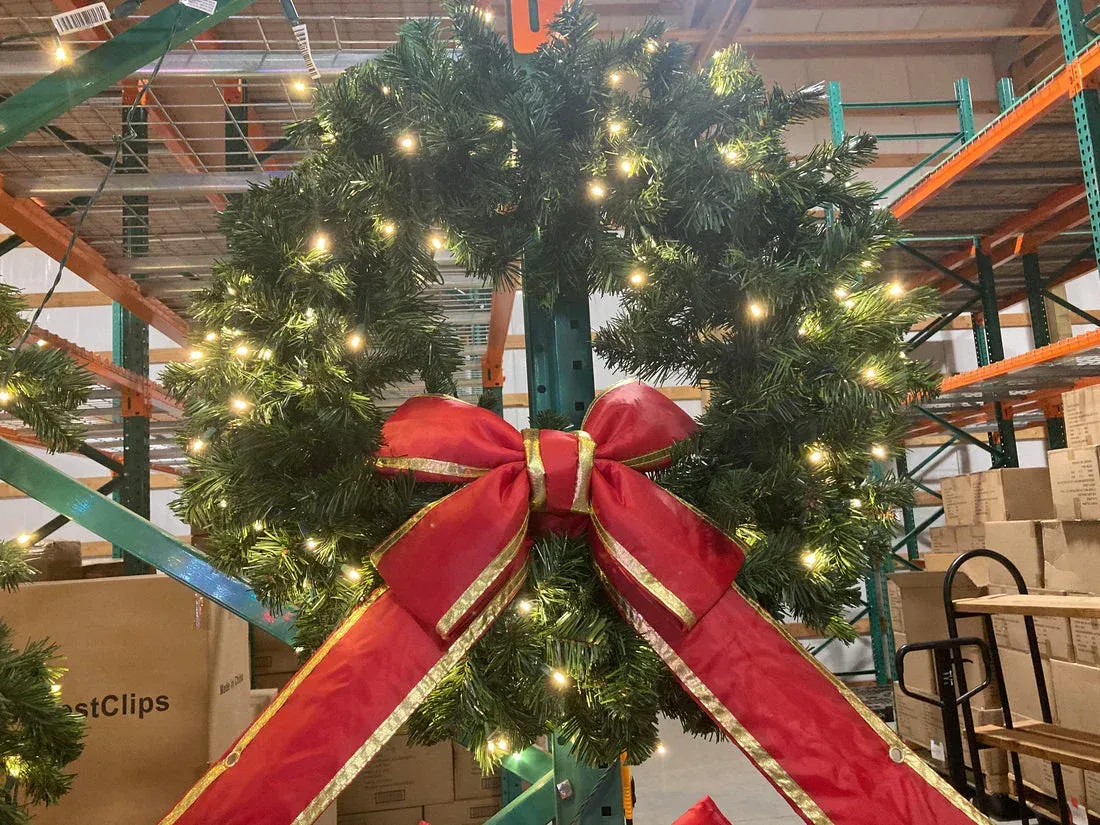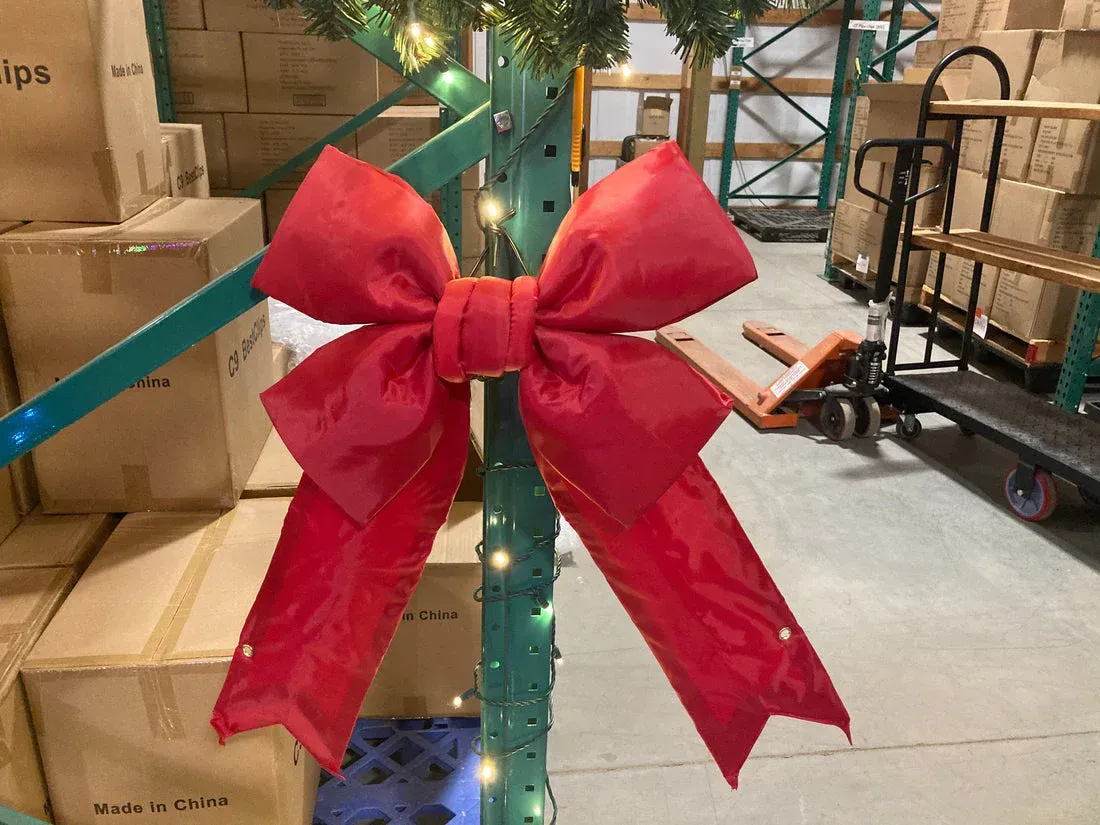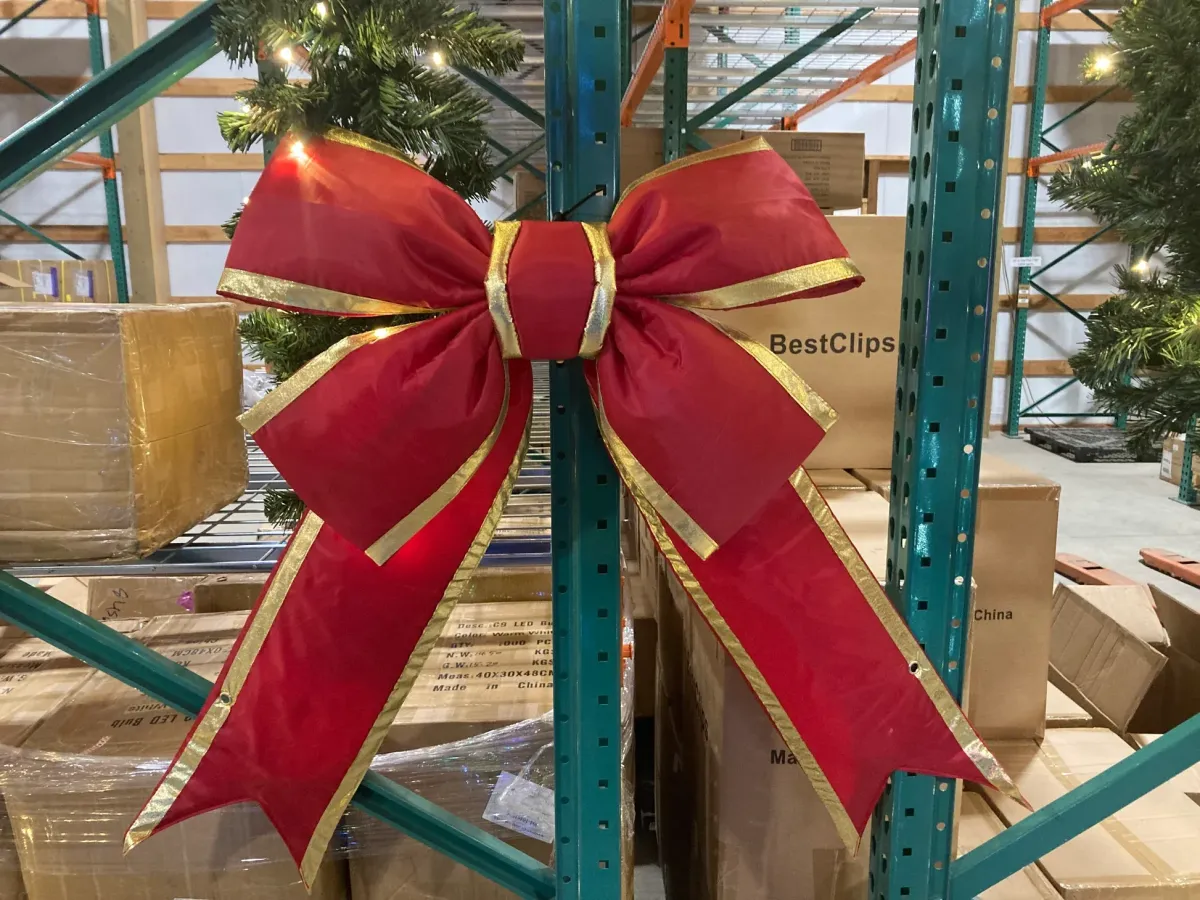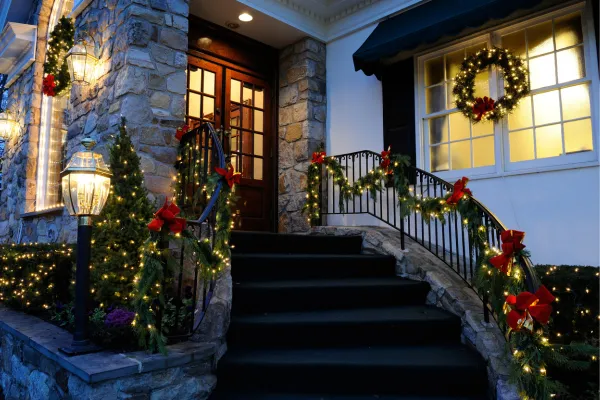Christmas Bows:
Timeless Holiday Elegance
Christmas bows are a quintessential holiday decoration, offering both simplicity and beauty to festive displays. These versatile accents can enhance both interior and exterior spaces, adding a cheerful touch to various holiday arrangements. The image of a vibrant red bow crowning a lush green wreath has become an iconic symbol of Christmas decor, embodying traditional holiday charm. Whether used as a standalone accent or as part of a more elaborate display, Christmas bows effortlessly infuse any setting with seasonal spirit, making them an indispensable element in creating warm and inviting holiday atmospheres.
Christmas Bows
Choosing the right Christmas bow can elevate your holiday decorations from good to great. When selecting a bow for your wreath, aim for one that's approximately one-third the size of the wreath itself – this proportion creates a visually pleasing balance. If you're adorning windows with festive bows, opt for suction cup hooks or specially designed adhesive hooks for easy, damage-free installation and removal. For outdoor displays, durability is key. Weather-resistant materials like polyester or nylon are your best bet, as they can withstand the elements while maintaining their vibrant appearance throughout the season. By considering these factors – size, attachment method, and material – you can ensure your Christmas bows add that perfect touch of holiday cheer to your decorations, both inside and out.
Elevate your holiday decor
with perfectly placed Christmas bows.
Before installation, shape your bow using its internal wire, assembling puff bows if needed. Choose bow sizes proportional to your decorations: half the wreath's diameter, 15"-18" for garlands, and smaller sizes for large trees. For windows, use outdoor-rated suction cups or command hooks. Mantel bows (15"-24") can be secured with command hooks, while stair banisters welcome 15"-18" bows attached via the provided wire. Outdoor installations on fences or posts may require zip ties or bungee cords for extra security. Most bows come with attached, plastic-coated wire for easy, scratch-free installation on various surfaces. After the season, store bows in waterproof bins, disassembling puff bows for flat storage. With these tips, you'll create stunning bow accents that perfectly complement your Christmas displays, both indoors and out.
Frequently Asked Questions
What sizes of nylon bows do you offer?
We offer a variety of nylon bow sizes to suit different decorating needs. Our range includes 12", 15", 18", and 24" bows, ensuring you can find the perfect size for your project, whether it's for a wreath, a large outdoor display, or anything in between.
What colors are available for your nylon bows?
Our nylon bows come in classic holiday colors. We offer solid red bows for a traditional look, as well as red and gold combination bows for a more luxurious appearance. These color options allow you to easily match or complement your existing holiday decor.
Are your bows suitable for outdoor use?
Yes, our nylon bows are designed to withstand outdoor conditions. Nylon is a durable material that holds up well against various weather elements, making these bows perfect for both indoor and outdoor holiday decorations.
Can I use these bows for professional Christmas light installations?
Absolutely! Our nylon bows are of professional-grade quality, making them ideal for commercial and residential Christmas light installations. They add a polished, festive touch to any holiday display and are durable enough to last throughout the season.
How do I attach these bows to my decorations?
Our nylon bows are designed for easy attachment. They typically come with wire ties or loops that allow you to secure them to wreaths, garlands, light displays, or other decorations. For more permanent installations, you can also use zip ties or floral wire.
Can I mix different sizes of bows in my decorations?
Yes, mixing bow sizes can create visual interest and depth in your decorations. For example, you might use larger 24" bows as focal points on main doors or large wreaths, while using smaller 12" or 15" bows for accent pieces or smaller decorations. This variety can add a professional touch to your overall holiday display.
Discover Expert Tips on Our Blog
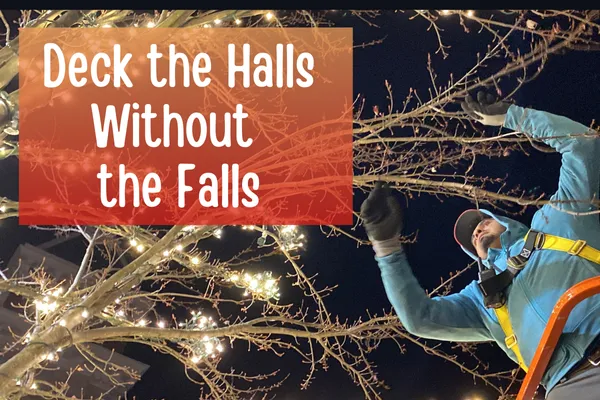
Deck the Halls Without the Falls: A Comprehensive Guide to Fall Protection for Christmas Light Installers
As a professional Christmas light installer, your job is to bring joy and holiday cheer to homes and businesses. However, this line of work comes with inherent risks, particularly when it comes to working at heights. Falls are a leading cause of injuries and fatalities in the construction industry, and Christmas light installers are no exception. In this blog post, we'll explore essential fall protection strategies to help keep you safe on the job.
Understanding the Risks
Before we dive into fall protection strategies, it's crucial to understand the risks involved in Christmas light installation. Common causes of falls include overreaching, improper ladder use, and lack of proper equipment. According to the Occupational Safety and Health Administration (OSHA), falls account for nearly one-third of all construction-related fatalities. The consequences of a fall can be severe, ranging from broken bones and head injuries to permanent disability and even death. Additionally, falls can lead to legal issues and financial losses for both the installer and the company.
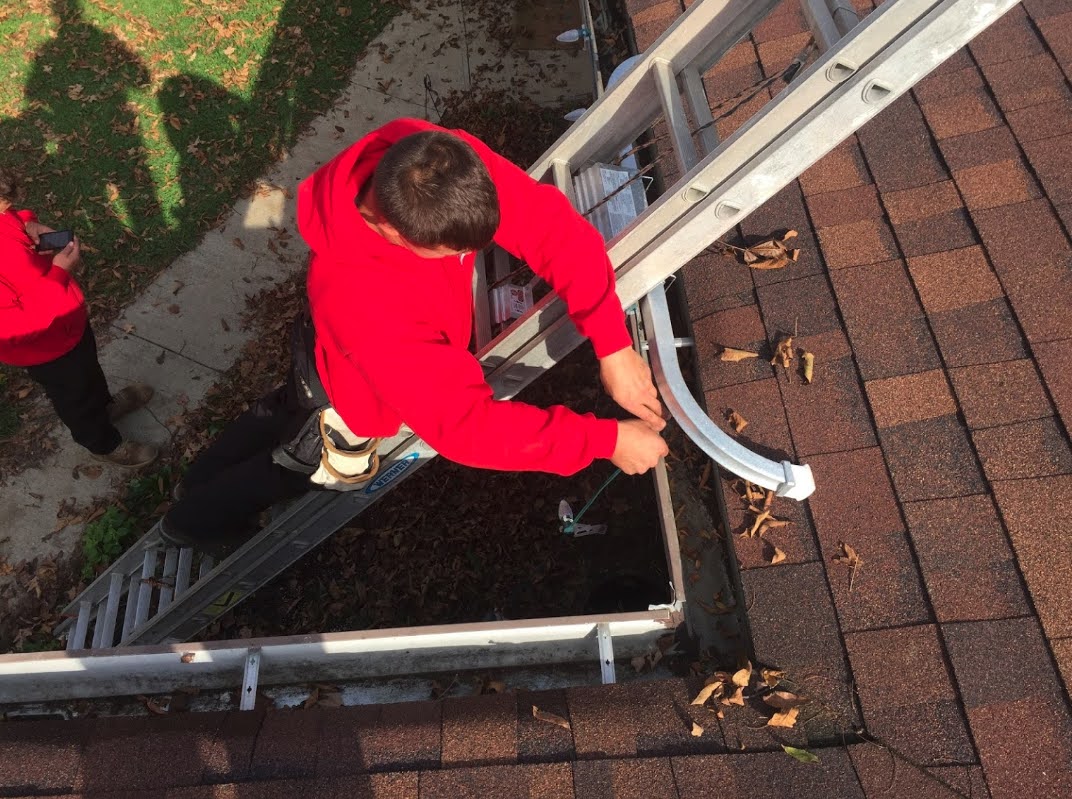
Proper Equipment
One of the most important aspects of fall protection is using the proper equipment. A Personal Fall Arrest System (PFAS) is a must-have for any Christmas light installer working at heights. A PFAS consists of three main components: a harness, a lanyard, and an anchor point. The harness should fit snugly and be worn correctly, with the straps adjusted to distribute weight evenly. The lanyard connects the harness to the anchor point and should be short enough to prevent the worker from hitting the ground in case of a fall. The anchor point must be strong enough to support the weight of the worker and the fall arrest system.
Ladders are another essential piece of equipment for Christmas light installers. Choosing the right ladder for the job is crucial. Stepladders are suitable for shorter heights, while extension ladders are better for reaching higher elevations. When using a ladder, always follow safety guidelines, such as maintaining three points of contact, keeping the ladder on level ground, and avoiding overreaching.
For larger projects or hard-to-reach areas, scaffolding or lifts may be necessary. There are various types of scaffolding and lifts available, each with its own safety guidelines. Always follow the manufacturer's instructions and OSHA regulations when using scaffolding or lifts.
Training and Education
Proper training and education are essential for ensuring the safety of Christmas light installers. OSHA requires employers to provide fall protection training to workers exposed to fall hazards. This training should cover topics such as identifying fall hazards, using fall protection equipment, and following safe work practices. In-house training programs can be tailored to the specific needs of the company and its employees.
Continuing education and refresher courses, such as those offered by Christmaslights.io: Online & In-Person Christmas Lights Training and Supplies are crucial for Christmas light installers to maintain their skills and stay informed about the latest safety regulations in the industry. These training programs help professionals keep their knowledge fresh, learn about new techniques and equipment, and ensure they are following best practices on the job. Employers should prioritize and support ongoing training for their Christmas light installers to foster a culture of safety, reduce the risk of accidents, and maintain a highly skilled workforce.
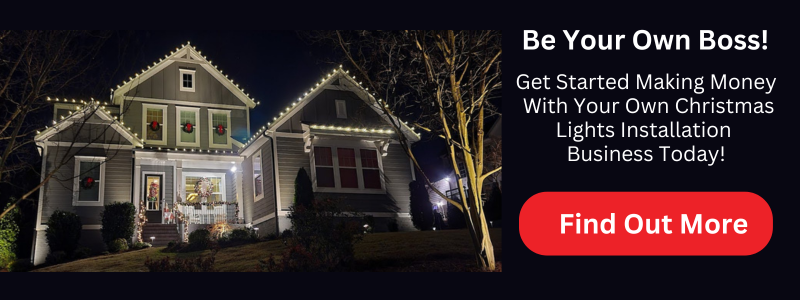
Job Site Assessment and Planning
Before starting any Christmas light installation project, it's essential to conduct a thorough job site assessment. This involves identifying potential fall hazards, such as unstable surfaces, overhead power lines, and weather conditions. Based on the assessment, a fall protection plan should be developed, outlining the specific equipment and procedures needed to mitigate the identified risks.
Communication and coordination with the entire team are crucial during the planning phase. Everyone involved in the project should be aware of the fall protection plan and their individual roles and responsibilities.
Best Practices During Installation
During the actual installation process, Christmas light installers must follow best practices to ensure their safety. This includes properly using fall protection equipment, following safe ladder usage techniques, and maintaining three points of contact when climbing or descending.
Working in pairs or teams can also enhance safety, as co-workers can spot each other and provide assistance in case of an emergency. It's important to manage fatigue and take regular breaks to avoid mistakes and accidents caused by exhaustion.
Emergency Response and Rescue
Despite our best efforts, accidents can still happen. That's why it's crucial to have an emergency response plan in place. This plan should outline the steps to take in case of a fall or other emergency, including contacting emergency services and providing first aid.
All employees should be trained on emergency procedures and know their roles in the event of an incident. Providing first aid and CPR training to team members can also be lifesaving. Coordination with local emergency services, such as fire departments and ambulance services, can help ensure a swift and effective response in case of an emergency.
Maintenance and Inspection
Fall protection equipment is only effective if it's well-maintained and inspected regularly. Employers should establish a schedule for inspecting harnesses, lanyards, and anchor points, looking for signs of wear, damage, or defects. Any equipment that shows signs of deterioration should be removed from service immediately and replaced.
Proper storage and care of equipment can also extend its lifespan and ensure it's ready for use when needed. Documenting inspections and maintenance can help track the condition of equipment and identify any patterns or issues that need to be addressed.
Creating a Culture of Safety
Ultimately, the success of any fall protection program depends on creating a strong culture of safety within the organization. Management must lead by example, prioritizing safety in all aspects of the business. This includes providing the necessary resources, such as equipment and training, and regularly communicating the importance of safety to employees.
Encouraging employee participation and feedback can also foster a sense of ownership and responsibility for safety. Recognizing and rewarding safe behavior, such as through incentive programs or public acknowledgment, can reinforce the importance of following safety protocols.
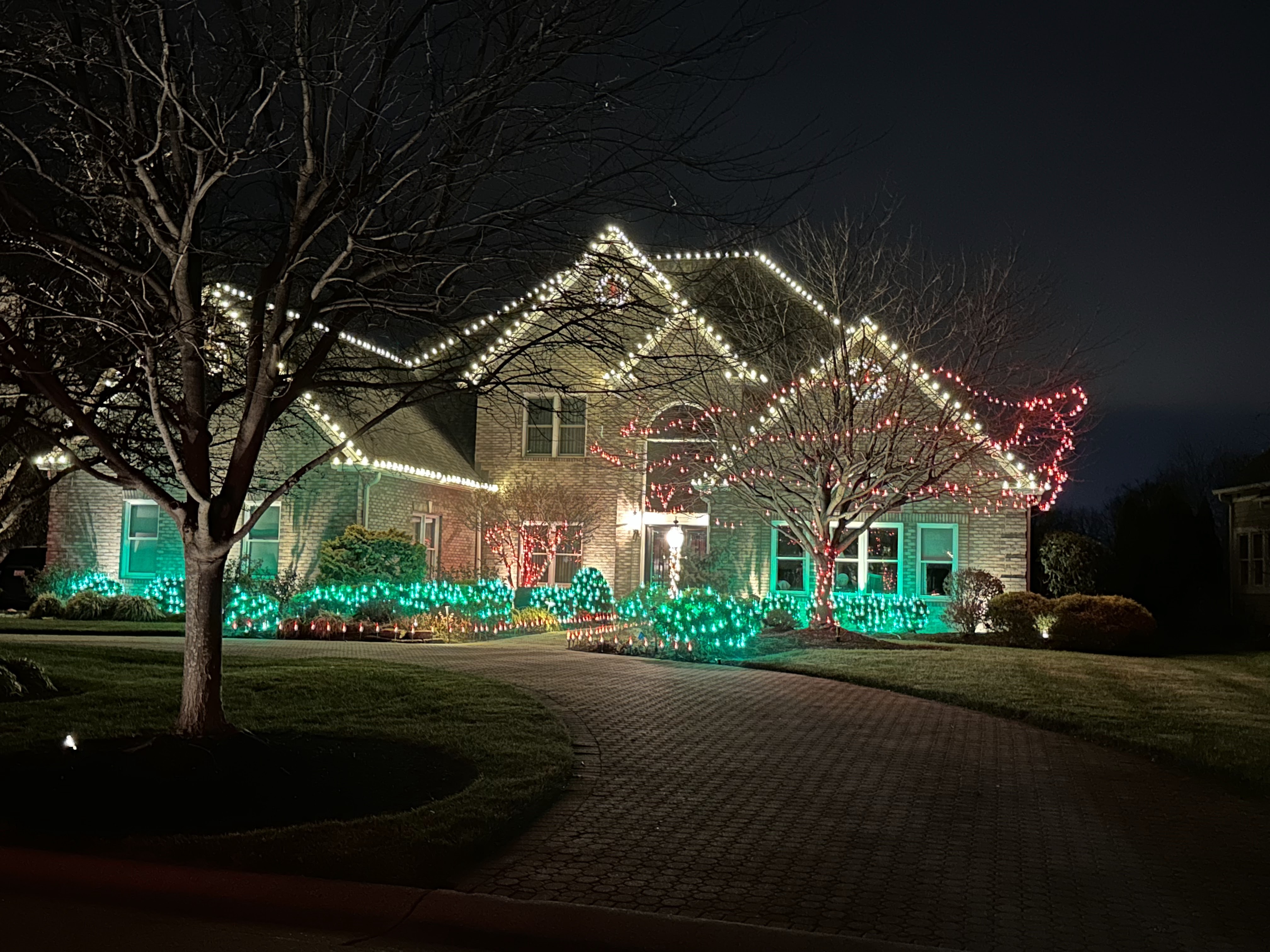
Continuously improving safety practices through regular reviews, incident investigations, and employee input can help identify areas for improvement and ensure that the fall protection program remains effective over time.
As a professional Christmas light installer, your safety should always be a top priority. By understanding the risks, using proper equipment, receiving adequate training, and following best practices, you can significantly reduce the likelihood of falls and other accidents on the job.
Remember, fall protection is not a one-time event but an ongoing process that requires commitment from everyone in the organization. By implementing these essential fall protection strategies and creating a strong culture of safety, you can ensure that you and your colleagues go home safely at the end of each day, ready to spread more holiday cheer.
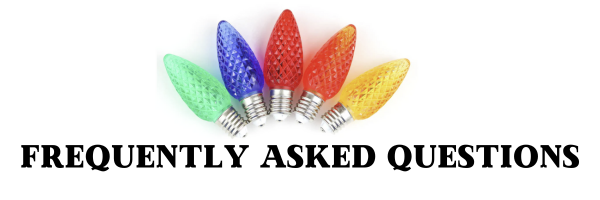
Q: What are the common causes of falls during Christmas light installation?
A: Common causes of falls include overreaching, improper ladder use, and lack of proper equipment.
Q: What is a Personal Fall Arrest System (PFAS), and what are its components?
A: A PFAS is a must-have for any Christmas light installer working at heights. It consists of three main components: a harness, a lanyard, and an anchor point.
Q: What should I consider when choosing a ladder for Christmas light installation?
A: When choosing a ladder, consider the height you need to reach. Stepladders are suitable for shorter heights, while extension ladders are better for reaching higher elevations. Always follow safety guidelines when using ladders.
Q: What does OSHA require in terms of fall protection training for workers?
A: OSHA requires employers to provide fall protection training to workers exposed to fall hazards. This training should cover topics such as identifying fall hazards, using fall protection equipment, and following safe work practices.
Q: Why is job site assessment important before starting a Christmas light installation project?
A: A thorough job site assessment helps identify potential fall hazards, such as unstable surfaces, overhead power lines, and weather conditions. This information is essential for developing a fall protection plan and ensuring worker safety.
Q: What are some best practices to follow during Christmas light installation?
A: Best practices include properly using fall protection equipment, following safe ladder usage techniques, maintaining three points of contact when climbing or descending, working in pairs or teams, and managing fatigue by taking regular breaks.
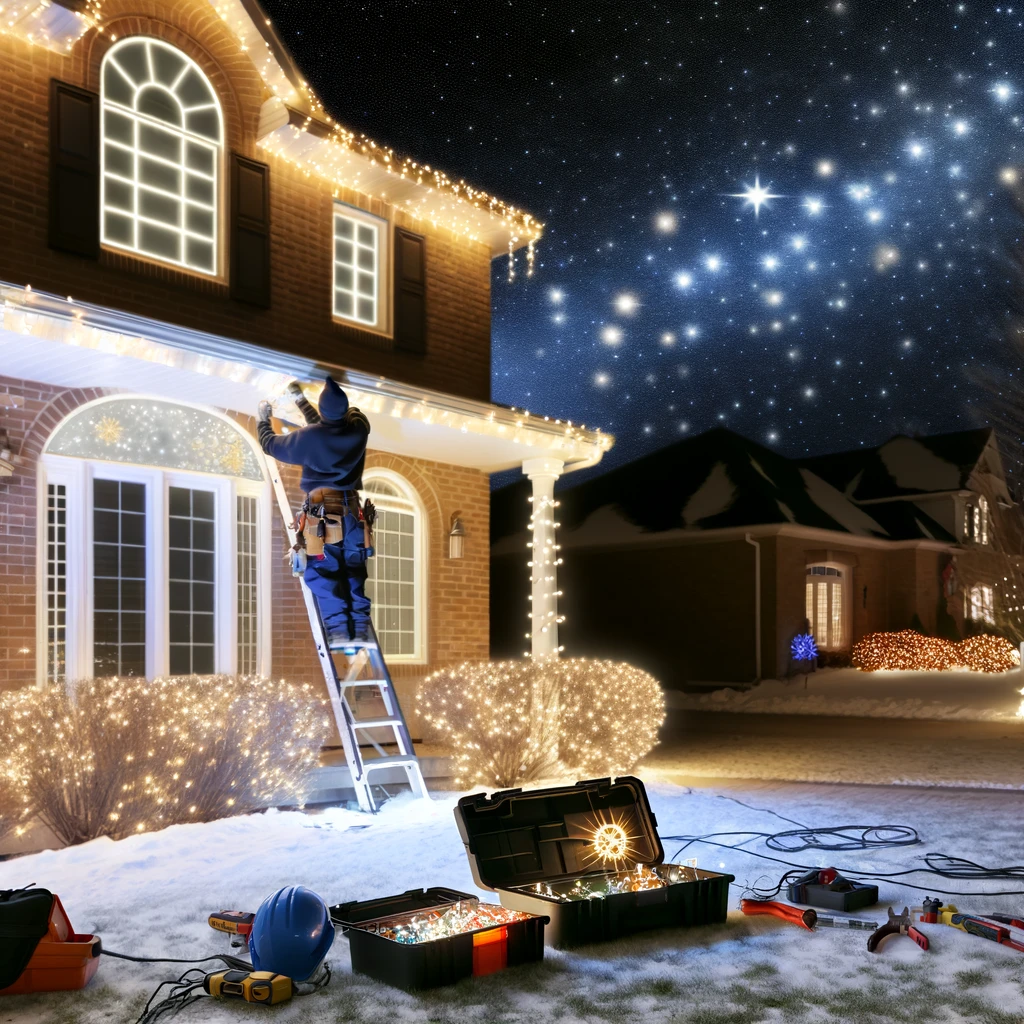
Q: Why is it crucial to have an emergency response plan in place?
A: Despite best efforts, accidents can still happen. An emergency response plan outlines the steps to take in case of a fall or other emergency, including contacting emergency services and providing first aid. It ensures a swift and effective response in case of an incident.
Q: How often should fall protection equipment be inspected?
A: Employers should establish a schedule for inspecting harnesses, lanyards, and anchor points, looking for signs of wear, damage, or defects. Any equipment that shows signs of deterioration should be removed from service immediately and replaced
Q: Why are continuing education and refresher courses important for Christmas light installers?
A: Continuing education and refresher courses help Christmas light installers maintain their skills, stay informed about the latest safety regulations, learn about new techniques and equipment, and ensure they are following best practices on the job.
Q: What kind of training programs are available for Christmas light installers?
A: Training programs like those offered by Christmaslights.io: Online & In-Person Christmas Lights Training and Supplies provide Christmas light installers with opportunities for continuing education and refresher courses.
Q: How do these training programs benefit professionals in the Christmas light installation industry?
A: These training programs help professionals keep their knowledge fresh, learn about new techniques and equipment, and ensure they are following best practices on the job.
Q: What role should employers play in supporting ongoing training for their Christmas light installers?
A: Employers should prioritize and support ongoing training for their Christmas light installers to foster a culture of safety, reduce the risk of accidents, and maintain a highly skilled workforce.
Q: What are the benefits of employers investing in ongoing training for their Christmas light installers?
A: By investing in ongoing training, employers can foster a culture of safety, reduce the risk of accidents, and maintain a highly skilled workforce in the Christmas light installation industry.



Copyright ©2025 All Right Reserved website designed by christmaslights.io
Terms of Service / Privacy Policy
Have questions or need assistance?
Contact us at (855)619-LITE

